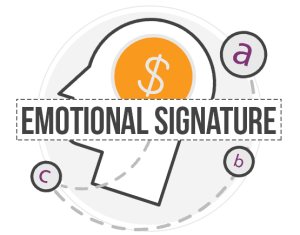Do you love your cable company?
If you do, you are in the minority. People almost universally align on their distaste for their cable company. However, we do love complaining about them, or at least I know I do. Cable companies are an excellent example of what NOT to do with your experience to promote customer-driven growth.
Cable companies are an excellent example of what NOT to do with your experience to promote customer-driven growth.
In a recent podcast, we laid out some of the cable providers’ shortcomings, and how we can see the concepts from Behavioral Economics coming into play as a result.
Here are a few we shared:
1. They give things to new customers only. You often see cable companies giving new customers 50 percent off for the first six months, or something similar. It’s a great deal unless you are an old customer paying the full amount.
 Loyalty is an emotional reaction. From a psychological perspective, firms want loyal customers and get a lot of benefits out of it, but forget that loyalty is a two-way street. Firms need to be giving something back. When acquiring new customers that snubs current customers who have been with you for a long time, you are not returning that loyalty. Then, customers feel like they shouldn’t be loyal back.
Loyalty is an emotional reaction. From a psychological perspective, firms want loyal customers and get a lot of benefits out of it, but forget that loyalty is a two-way street. Firms need to be giving something back. When acquiring new customers that snubs current customers who have been with you for a long time, you are not returning that loyalty. Then, customers feel like they shouldn’t be loyal back.
Moreover, cable companies are also courting disloyal customers through promotions like that. Customers who leave their old cable company to save a few dollars for the first six months may be likely to leave you as soon as they possibly can when they get a better deal somewhere else.
2. They miss the opportunity to create a relationship beyond transactional with customers. Relationships with companies can feel like genuine, familial relationships or strictly transactional. Transactional relationships are not inherently wrong; you don’t have to have a close relationship with every business with which you interact. However, having a stronger relationship with the cable company could benefit them. Cable companies are long-term relationships, contractual even. Moreover, they want to upsell you, which is more likely to occur when you like them. Also, feeling more trust and emotional engagement toward the cable company means that customers are more willing to forgive problems.
 Let me tell you what happened to me when I decided that I was going to change cable companies in Florida. My current provider said that I needed to take back the cable box to the retail store. When I took it there, they kept me waiting in the hot Florida sun. It felt like they were trying to wind me up or a punishment for leaving. The signal that the interaction sent was that the cable provider is not interested in having anything but a transactional relationship with customers.
Let me tell you what happened to me when I decided that I was going to change cable companies in Florida. My current provider said that I needed to take back the cable box to the retail store. When I took it there, they kept me waiting in the hot Florida sun. It felt like they were trying to wind me up or a punishment for leaving. The signal that the interaction sent was that the cable provider is not interested in having anything but a transactional relationship with customers.
However, if you were to ask my current provider if they were trying to aggravate customers and drive them away, I would lay you money they would deny it. Instead, they would say they wanted loyal customers. However, when push comes to shove, they made their decision based on operational concerns and processes—and I waited in the sun (did I mention the humidity?) to turn in my equipment.
3. They fail to make an excellent first impression. When cable companies are late to their stated window of arrival, it creates a bad impression. Now, to be fair, this is an area that at least my cable company in Florida has improved. Not only did they arrive on time, but they called to let me know they were close about ten minutes before they got there, which was nice. However, this experience is not universal and certainly didn’t make it over the pond, as it were. My provider in the UK rarely, if ever, turns up on time.
Imagine if I was scheduled for installation? Waiting for someone who is late for their first interaction with you does not make a great first impression. Moreover, it doesn’t set up the relationship for success.
4. They treat all customers the same. I consider myself to be reasonably technically-able. However, the first thing they say at the cable company’s technical support is, “Have you rebooted your router?” Of course! I want to skip ahead to the real technical support. You would have thought that there would be some way of segmenting the market to route calls to different levels of technical support instead of having everyone start the same.
 Even the TSA (Transportation Security Administration) gets this idea of segmenting based on skills and experience. There are different lines at airport security; one line is for experienced travelers, and the rest are for everyone else. That means when you are on a business trip alone, you won’t end up behind a family trying to shepherd kids through airport security with the efficiency level of herding cats. Or waiting impatiently behind someone who has loads of questions for the TSA employees about whether or not they need to remove their shoes and socks, or just shoes. It avoids a lot of stress and hassle for everyone involved.
Even the TSA (Transportation Security Administration) gets this idea of segmenting based on skills and experience. There are different lines at airport security; one line is for experienced travelers, and the rest are for everyone else. That means when you are on a business trip alone, you won’t end up behind a family trying to shepherd kids through airport security with the efficiency level of herding cats. Or waiting impatiently behind someone who has loads of questions for the TSA employees about whether or not they need to remove their shoes and socks, or just shoes. It avoids a lot of stress and hassle for everyone involved.
The cable companies could take their cues from the TSA here. People would respond well to segmentation for cable company tech support, or at least I would. I am calling in because I already tried all the basic stuff. Now, I need more expertise to fix my problem, and I want to get down to it.
We expect them to be inadequate because of this bad reputation that they have.
5. They have a terrible reputation. Cable companies have a terrible reputation, and reps are “sticky,” meaning they stay with you. So, we expect them to be inadequate because of this bad reputation that they have.
Reputation can be challenging and slow to change. If a new CEO for ABC Cable Company wanted to shake up the industry and change the perception of their brand, it would take a lot of time and effort to do that.
Don’t Be Like Your Cable Company
You are lucky because you can use these insights provided by the cable companies’ collective failures to build an experience that avoids these problems and fosters customer-driven growth for you. Here are our suggestions:
Institute an orientation on the customer in your organization. You can gain some real advantage by ensuring the customer has a place at the table when making decisions. It is essential to ensure that customers have advocates within your company who look at things from the customer’s perspective, as opposed to everyone maximizing the benefit to the company with their every move.
Identify the culture of your organization now and improve your customer-centricity. My book, Revolutionize Your Customer Experience, delves into the idea of customer-centricity with the Naïve to Natural Model.
![]() To summarize, there are nine areas of your organization that indicate on a scale how customer-centric you are, ranging from Naïve (the least customer-centric) to Natural (the most customer-centric).
To summarize, there are nine areas of your organization that indicate on a scale how customer-centric you are, ranging from Naïve (the least customer-centric) to Natural (the most customer-centric).
In our business growth consultancy, we use this model to assess the customer-centricity of our clients so we know what areas are doing well, and which one could use some attention. The model gives you practical and tactical learning that can focus your efforts on making changes that will promote customer-driven growth.
Ensure the senior team understands why customer-centricity is crucial to your success. None of the senior team is going to say, “We want to treat customers as a transaction.” The top team wants loyal customers. However, a significant difference exists between saying those things and devoting resources to implementing them.
Understand the low points of your experience and how you can positively affect them. Confirmation Bias is how we tend to absorb new evidence as support for our previously held beliefs. We look for things to confirm our view of the world. So, even if the cable company doesn’t do anything that unusually awful, with Confirmation Bias in play, we interpret everything they do wrong as horrific because of the stigma that surrounds their industry. We are looking for them to fail. In other words, maybe they aren’t as bad as I make them out to be.
You know what? I can’t even let that go by…they are as bad as I say they are!
The point is, Confirmation Bias might not be doing your experience any favors, either. It is vital to assess your weaknesses and develop improvements to those moments, or at least implement ways to lessen the impact of these bad moments.
 Employ policies that help customers to feel ownership of your service. One of the Behavioral Economics concepts that help form new customer relationships is the Endowment Effect. The Endowment Effect means that people are more likely to keep something when they feel like they own it. In customer acquisition, creating situations that foster the Endowment Effect is essential. However, you have to ensure that people want to feel like they own it, and that comes down to making good impressions with your product or service.
Employ policies that help customers to feel ownership of your service. One of the Behavioral Economics concepts that help form new customer relationships is the Endowment Effect. The Endowment Effect means that people are more likely to keep something when they feel like they own it. In customer acquisition, creating situations that foster the Endowment Effect is essential. However, you have to ensure that people want to feel like they own it, and that comes down to making good impressions with your product or service.
Don’t annoy current customers with your new customer acquisition policies. Growth comes from two things, acquisition, and retention. The problem here is “new customers only” focuses only on an acquisition. Moreover, it annoys existing customers who then, in turn, start to look around for a place to be a “new” customer. We are not saying you shouldn’t have ways to attract new customers. New customers are essential to your customer-driven growth. However, we are saying that you should also ensure that your new customer policies are available to current customers, too. For example, if new customers get a discount for signing up, maybe current customers get it also for renewing or adding a new service.
We are not saying you shouldn’t have ways to attract new customers. New customers are essential to your customer-driven growth. However, we are saying that you should also ensure that your new customer policies are available to current customers, too.
Cable companies have a terrible experience. That’s why they are such a great example of what NOT to do with yours. Plus, it’s fun to complain about them because at the end of the day, they are an entity with a bad reputation that we love to hate—and can’t live without! However, I would wager that as soon as we feel we can “cut the cable” without losing too much access to what we love (read: sports, local channels, and news), many of us will.
To avoid a similar outcome for your product or service, we recommend you employ a customer-centric culture at your organization. It starts with an honest assessment of your current orientation and a senior team that believes in the idea enough to devote resources to it in the short-term for the long-term gains it will return.
To hear more about this topic in more detail, listen to the complete podcast here.

What customers say they want and what they really want are often different things. It is vital to know what drives value for your organization. Our Emotional Signature research can tell you where you are compared to other organizations and what to focus on to drive value for your customers. To learn more, please click here.
Colin Shaw is the founder and CEO of Beyond Philosophy, one of the world’s leading Customer experience consultancy & training organizations. Colin is an international author of six bestselling books and an engaging keynote speaker.
Follow Colin Shaw on Twitter @ColinShaw_CX


